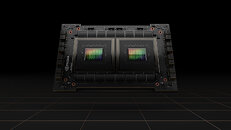
Antec Unveils Full-Tower Performance 1 FT Flagship Case with Temperature-Control Display and High Cooling Performance
[Editor's note: Our in-depth review of Antec Performance 1 FT Case is now live]
With outstanding cooling performance and lots of useful features, Antec Inc. presents the latest flagship of full towers, the new Performance 1 FT. Featuring an airflow-enhanced front panel design, magnetic front filter, and four pre-installed PWM fans, this new chassis provides efficient airflow and great cooling performance. The case is now commercially available from MSRP US$159.99.
The new Antec flagship supports the latest RTX 40 Series GPUs. Considering the increasing demands for CPU and GPU cooling, Antec designed the Performance 1 FT to enhance the air intake, improve the cable routing, and enable an easy installation with various options. The new temperature display function allows to keep control of the components. The display screen located on the case top allows users to check the temperature of the GPU and CPU at a glance. It addresses the need for temperature monitoring without purchasing expensive cooling kits.
With outstanding cooling performance and lots of useful features, Antec Inc. presents the latest flagship of full towers, the new Performance 1 FT. Featuring an airflow-enhanced front panel design, magnetic front filter, and four pre-installed PWM fans, this new chassis provides efficient airflow and great cooling performance. The case is now commercially available from MSRP US$159.99.
The new Antec flagship supports the latest RTX 40 Series GPUs. Considering the increasing demands for CPU and GPU cooling, Antec designed the Performance 1 FT to enhance the air intake, improve the cable routing, and enable an easy installation with various options. The new temperature display function allows to keep control of the components. The display screen located on the case top allows users to check the temperature of the GPU and CPU at a glance. It addresses the need for temperature monitoring without purchasing expensive cooling kits.

























































